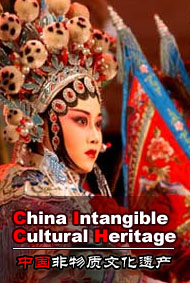
| Heritage Home | ||
| Literature | ||
| Music | ||
| Dance | ||
| Drama | ||
| Quyi | ||
| Acrobatics/Sports | ||
| Fine Arts | ||
| Crafts | ||
| TCM | ||
| Custom | ||
|
|
|
Singing Party of the Yao Ethnic Group
festival when the Paiyao people worship ancestors, spread historical knowledge and celebrate the harvest after a year's hard work. According to historical documents, in the early years (1368-1398) of the Ming Dynasty (1368-1644), the Paiyao tribe was at its height of prosperity and had a complete set of Shuagetang performances. The Grand Shuagetang is held every three or five years and lasts three days; and the Minor Shuagetang is held every two or three years and lasts one day. On the occasion, every family will prepare rice wine and sticky rice cakes to feed their guests. The Yaos worship their god. The offerings are commonly made of pig, chicken, duck, eggs and fish. But dogs, snakes, cats and frogs are taboos for offering. Men and women, old and young, all in traditional dress, swarm out of villages, singing and dancing, and gather at the Yao Village Singing Ground of Nangang to attend ceremonies such as traveling with God, worshipping ancestors, and offering sacrifices to Fazhen for chasing away black-faced spirits. Meanwhile, they beat drums and strike gongs, sing folksongs, play suona, blow ox horns, dance the long-drum dance and burn local blunderbuss. The whole Yao Mountain is immersed in happiness. The Paiyao tribe has no written language of their own. The widely read Yao scriptures in Shuagetang is valuable proof of the origin of Paiyao people and provides abundant material for research on when the tribes of the Yao ethnic group were decided, the folk belief of Paiyao tribe, and the creation of the Yao scriptures. The exquisite topknots, ornaments and florid costumes, the unique long-drum dance, and the employment of the suona, ox horn, gongs and flute musical instruments, have strong ethnical artistic flavor and value. |